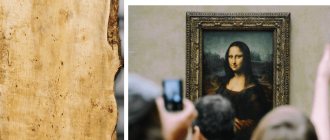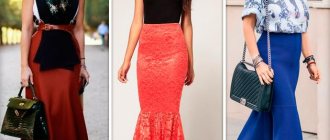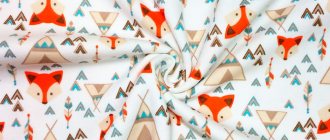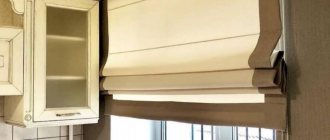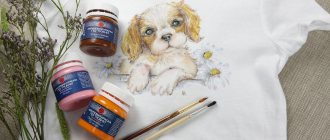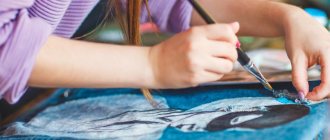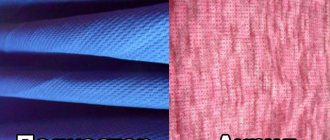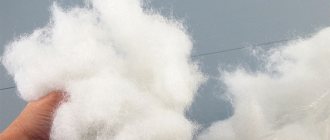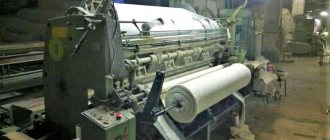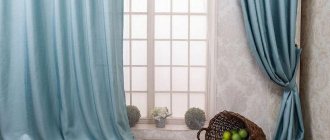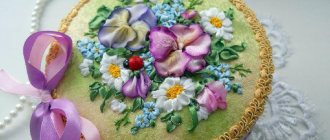Canvases U.canvas
the “Maestro” and “Etude” brands from the Ukrainian manufacturer U.canva, I have never come across a low-quality canvas, although I very often make purchases in online stores, which means I cannot check the product before purchasing . The canvases are always well and beautifully packaged with protective film, the canvases in packs are packed with sheets of cardboard, and the parcels are packed in durable cardboard boxes. Also, online stores often have promotions and discounts for the holidays, which is also very nice. In general, I am very pleased with the quality of the products and the service.
Handmade canvas from U.canvas
How to choose a good canvas?
Next, I’ll tell you in more detail what exactly you should pay attention to when buying canvas.
High quality primed cotton canvas to be stretched over a stretcher
The first is the quality of the canvas itself, which is stretched on a stretcher . Carefully inspect the surface of the fabric; its texture should be the same everywhere, without any stripes or spots with a texture that is too smooth or, conversely, with a bunch of “knots.”
If there are no such defects, pay attention to the direction of the canvas threads; they should be parallel to the edges of the stretcher. The fabric should be stretched parallel to the stretcher, and not somehow obliquely or diagonally.
Properties of oil pastels
Subframe and types of canvas base
The base is one of the most important characteristics of the canvas. The canvas is stretched on a stretcher, or glued to hardboard (fibreboard, fiberboard, MDF) or thick cardboard. 1.
Canvas stretched on a stretcher
is a structure made of wooden slats onto which the canvas is stretched; you can purchase this product separately, or you can purchase the stretched canvas immediately.
The advantage is that you can always adjust the degree of canvas tension. 2. Canvas stretched on cardboard
, everything is simple here, the same canvas is glued to cardboard, due to the absence of a stretcher, the structure is not so massive. The main advantage is that it does not sag over time. Also, do not forget about primed MDF and fiberboard, which is a fairly light and practical base, but the disadvantages are that the materials are not durable enough compared to the above. Plywood tends to delaminate, and DPV can give a wave effect. form
The stretcher and canvas bases vary in shape: circle, square, rectangle, triangle. They vary in size from 10x10cm to 100x120cm. If you want a non-standard canvas size, or a larger size, you can contact us and order this canvas, the waiting time is from a week.
Characteristics of canvas for painting
Canvas made of cotton, linen and synthetic fabric are stretched onto stretchers. Canvases come in fine-grain, medium-grain and coarse-grain. It is impossible to recommend any one type of canvas to everyone, since the canvas is selected based on the assigned tasks.
For beginners, I recommend using fine-grained or medium-grained cotton canvases, or fine-grained linen canvases for their work.
Coarse-grained linen canvas on a stretcher.
I have never used synthetic canvases, so I cannot comment on working on such a surface.
Linen fabric differs from cotton in its greater density and stiffness, as well as knobbiness. Cotton is softer.
Pay attention to the density of the fabric stretched on the stretcher, especially for cotton canvases. You should not buy canvas with a density less than 220 g/m2.
Naturally, the density depends not only on the fabric itself, but also on the soil, its composition, the quantity and quality of primer layers, and sizing.
Abstract painting with acrylic paints: painting a city in the rays of sunset
High quality canvas for painting
In the photo above, the density of the canvas is indicated on the packaging in a red square: 315g/m2. The green box indicates that this canvas is made of cotton, the blue box indicates that it is a medium-grain canvas.
Density is usually indicated on the packaging. Also, conditionally, it can be determined by touch; if you lightly press your finger on the canvas, there should be no dent on it.
If finger pressure marks remain on the canvas, it either has too weak a layer of primer or the fabric is very loose.
On a high-quality primed canvas there should be no gaps, “dots”, “crosses” between the threads, or areas where no primer has been applied.
There are many recipes for compositions for sizing and priming canvases. At the initial stage, you should not experiment too much. It is better to buy canvases with a standard, acrylic three-layer primer - oil and acrylic paint fits perfectly on such a surface.
Cotton
This type of fabric is based on natural raw materials: cotton seeds. Thanks to them, the canvas acquires a noble shade - creamy white. This option is more common for both beginners and professional artists.
Also, because of their appearance, cotton canvases belong to the “luxury” category. But before you order the “base” for a future painting in a specialized store, you should take note of the following nuances:
- Cotton canvases are less durable than linen. This is due to the specifics of the raw materials used for their production.
- Cotton fabrics are susceptible to harmful microorganisms that cause mold.
- Cotton fabric deforms faster in rooms with high humidity levels.
- This type of fabric quickly absorbs moisture, and because of this, dark spots and other cosmetic defects appear on its surface.
- Paintings painted on cotton canvases must be periodically removed from the stretcher. This is the only way to prevent distortion of the texture of the material.
Knowing the advantages and disadvantages of canvas will help you make smart choices and provide suitable storage conditions for your paintings.
Canvas stretcher
From the quality of the canvas itself, let's move on to the quality characteristics of the stretcher , which are no less important than the canvas itself.
Canvas for painting with a blind stretcher
Painting stretchers come in two types: solid and prefabricated (modular). It is quite easy to determine the type of stretcher if you look at the canvas from behind. The corners of the blind stretcher are rigidly fastened together with glue (or another method), or additionally fixed with wooden triangles.
Seascape by Aivazovsky “Sunset on the Sea”
Prefabricated (modular) subframe
At the corners of the prefabricated subframe you can see the modules connected to each other. These stretchers come with pegs that are driven into the corners. Using these pegs you can adjust the tension of the canvas on the stretcher.
Modular (prefabricated) subframes have two undeniable advantages:
- On such a stretcher you can always adjust the tension of the canvas if, for example, the canvas sags due to changes in humidity or temperature. In such cases, the wedges inserted into the corners are very carefully tapped with a hammer, thereby increasing the tension of the canvas on the stretcher.
- The second advantage is that the painting on such a stretcher, even if it is large, is very convenient to transport . In such cases, the canvas is removed from the stretcher, and the stretcher is disassembled into modules. The canvas is carefully rolled into a tube and placed in a tube; stretcher modules are also placed inside the tube. Thus, both the canvas and the stretcher will reach their destination safe and sound.
The blind stretcher cannot be disassembled, and the level of canvas tension on it is difficult to change; you have to remove and re-stretch the entire canvas.
Also, please note that the outer corners of the subframe should be smoothed - rounded, that is, there should be no sharp right angles.
Landscape “Sunset over the sea”: painting with a palette knife without thinners
The outer perimeter of the subframe should be slightly raised, and the inner one should go deeper. The canvas is stretched only along the outer rounded edge of the stretcher, and should not touch it anywhere else on the front side.
Subframe with protruding edge
If there is no protrusion on the outer surface of the stretcher, it will be very difficult to write even on the highest quality and perfectly stretched canvas, using any technique, no matter what you choose. The paint will lay down completely differently on the part of the canvas that is in contact with the stretcher, and on the part where it is not. The outline of the subframe will always appear through the paint layer.
Fine grain painting canvas
Natural canvas
Natural materials include linen and cotton canvas. The first one is considered more resistant to moisture (but it is still afraid of moisture) and damage, and it also holds the initial tension on the subframe longer. These are incomparably advantages. But at the same time, linen canvas is the most expensive of the materials, and paintings printed on linen will cost almost twice as much as on cotton. This is one of the reasons why we did not choose linen canvas for paintings, despite its advantages. In addition, the texture of linen material is rougher, so it is not recommended for printing detailed images. And one more disadvantage of linen canvas is its slightly yellowish or gray tint.
Cotton canvas is one of the most popular materials today, both for printing and painting. This kind of canvas is more manageable when stretched, it is stronger and does not tear during the process of stretching on a stretcher and has greater elasticity (unlike linen, you need to be much more careful with it, which often reduces the quality of the initial stretch).
The texture of cotton is more pronounced (cellular), which is very important when printing. After all, when a portrait is painted in oil, it is the paint that gives the canvas its texture, and the print is applied in a single, even layer, and if the texture of the canvas is not expressed, then we will get the effect of an ordinary printed photograph (almost like on photographic paper). At the same time, the texture of the canvas is softer, without rough weaves, so cotton canvas is more suitable for detailed images and gives a clearer picture when printed.
Cotton canvas has a noble white-cream shade, without excessive yellowness and blueness, which, together with high-quality ink and proper image processing, allows you to achieve the most accurate color rendition.
The cost of this material is lower than flax, which allows us to make paintings at affordable prices.
Packing of Canvas for Painting
If the canvas is packaged, this is an aesthetic and practical plus. Some manufacturers pack finished canvases in thin transparent film. I think this is an excellent solution. Through such a film the surface of the canvas is clearly visible and can be thoroughly examined for defects. The degree of tension of the fabric through such a film can also be determined: see if the canvas is sagging under the film.
Canvases in film do not get dirty, they are convenient and not scary to transport even on public transport, they can stand in your house or closet as long as you like - they are not afraid of dust.
Canvas for painting in transparent packaging
It is also important for me that the dimensions of the subframe are immediately indicated - this is very convenient; for some reason, some manufacturers do not do this.
Landscape “Spring Storm”
Painting stretcher with dimensions
I have had both positive and negative experiences in purchasing canvases. For example, once, under the influence of advertising, I ordered 10 canvases for testing (thankfully, no more), on which I felt almost all the possible shortcomings of low-quality canvas and stretcher. The canvases sagged a little, the stretchers were blank with sharp corners, and in addition, several canvases had stripes with defects on the fabric, and the producers clearly spared the primer...
And finally, I would like to say that beginners should not make their own canvases and stretchers, even if you sell excellent modules, soil and canvases.
It will take you too much time and may bring completely unpredictable results. If your stores have quality canvases, buy them without hesitation! This will save a lot of your time and money. Having been inspired by an idea, immediately getting to work is much more effective than starting the creative process with not entirely creative tasks.
